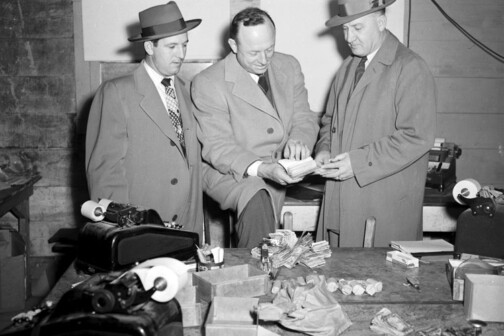As we all continue to work from home, many of us wonder if this work arrangement will be just a temporary hiccup or a permanent paradigm shift in the way we work and operate. During a catastrophe such as COVID-19, there is often a tendency to jump to rash conclusions about how office tenants should consume and utilize office space.
Law firms are no different and in general, make up a large portion of the Dallas-Fort Worth office market. While these firms vary in sizes and specializations, there are a few strategies that law firms need to consider in preparation for a post-COVID-19 office environment.
Take a “wait and see” approach

Companies don’t want to spend millions of dollars to reconfigure or reconstruct space based on a pandemic that might resolve itself in the next 12 to 18 months.
While there is no doubt that social distancing measures and precautions should be taken when people start to return to work, complete office rebuilds in the middle of a lease based solely on fear are not viable solutions for most firms. As long as people don’t feel safe at the office and can get their work done from home, they’re not coming to the office.
We won’t truly see a shift back to normalcy until contagion is no longer an issue.
As consumers of office space in Dallas-Fort Worth, law firms should be asking themselves a few key questions: Post vaccine, do I expect a change in the number of people who work full time in my office; how do I expect my current experience to impact our future office decisions on office space; and would you expect more people to work from home than before?
Don’t underestimate the value of re-investing in your workplace
When looking at expenses, real estate costs account for approximately 6 to 8 percent of a firm’s overall gross revenue. While some experts may be sounding the alarm for firms to redesign and reconfigure their spaces, does a reduction in footprint really move the needle enough to see significant returns? Or, does it end up hurting company culture more in the long run with the removal of communal spaces in the office?
While every firm is different in size and specialization, the need to reduce a firm’s footprint in a building might be measured by comparing the real estate cost savings vs. the reduction in company culture.
If a large law firm is looking to reduce its footprint by 20 to 25 percent, the overall cost savings in relation to gross revenue will only be roughly 1.5 to 2 percent in real estate expenses. However, if you choose to shed the communal space in favor of keeping attorney offices, the reduction could likely create a drastic drop in company culture as the collaborative environments diminish. In the long run, this can greatly hurt a firm’s overall success and competitiveness for recruiting. This balance is something several firms struggle with.
The overall question: Does reducing my footprint to save on real estate expenses now truly hurt the firm’s long-term growth and revenue? Perhaps the building’s landlord can be leveraged to lower real estate costs by restructuring a firm’s lease without the tenant taking a loss in valuable collaboration space.
Plan for a more collaborative workplace
As we all work from home, are people going to want to be tethered to a fraction of their office when they go back to work? For most, working at home offers the flexibility to function from anywhere in a residence and being anchored in one area is not necessary to do head-down work.
Imagine a 25,000-square-foot law firm with 40 lawyers. Typically, the average lawyer spends 90 percent of their time in the office in 2 percent of that space. Is that the most effective way to practice law?
Over the last three months, we’ve proven that anyone can do heads-down work from home. However, post contagion, the drive to return to work will not be to do ‘head-down’ work but to collaborate and be around your team.
I think the bigger question law firms need to ask themselves should be: Is the space paradigm of everybody having individual offices and very little common space the way law firms are really going to operate in the future? If it is, who is going to the office?
There will be a renewed emphasis on collaboration/communal space and that’s most likely going to be the only real reason people go to the office anymore, at least for the next 24 months. If you were building out your office again in two years, post COVID-19 and contagion, would you still dedicate one office for every lawyer?
Recruit attorneys by offering flexible work from home options
Thinking outside the box right now for many firms is crucial as some might be wrestling with the effects of this pandemic. But, one major expense law firms will continue to invest in will be recruitment of talent.
As medium and large firms try to position themselves to better deal with COVID-19, they won’t want to do anything so dramatically different in space design that it makes them less competitive for law school, entry-level or lateral talent. Firms want to be on the cutting edge but should be cautious not to be on the “bleeding” edge.
An accommodation firm might use to attract and retain talent could be to give their people the following choices:
- The flexibility to work from home, two to three days a week, but without a dedicated office at the firm, or;
- A commitment to coming into the office full time with a dedicated office.
Is it possible that this flexibility will make a law firm more desirable for candidates? Perhaps a salary increase to those who opt-out of the office might help offset real estate costs, only if the price per square foot per office is greater than the salary increase.
Determine if working from home will diminish productivity
While this topic mainly deals with the present tense, it is applicable to the future if members of a law firm elect to work remotely, post contagion.
The firms that have had a long history of company culture and are accustomed to working in teams are the ones that are able to continue to work effectively remotely because there is already an inherent relationship among associates and partners.
If firms bring on new people remotely and keep them remote as things go back to normal, will we find that these people will struggle with client servicing?
For example, a married couple that has been together for years and then suddenly has to make their relationship work long-distance, the couple is likely to be able to withstand the disruption and eventually pull through without major issues in their relationship.
However, if you have a couple that has met virtually and tries to create a meaningful, strong relationship completely virtual, they might have issues in maintaining their expectations. The same concept goes for a law firm and its clients.
Are systems currently in place to make it feasible to continue the level of service and value for clients in place pre-pandemic as we currently work (and might continue to work) remotely?
Conclusion
Besides two major wars over the last century, no significant event in America has impacted the daily lives and businesses as COVID-19 has.
As things start to return to normalcy over the next 12 months, we will look back and really appreciate the things we took for granted before this crisis unfolded.
Additionally, we will also realize that it’s time to make some permanent changes to the way we conduct business. The above was based purely on our own predictions but the great thing about predictions is that a year from now, no one remembers if you were wrong.
Sean Tooke is a senior associate at Site Selection Group LLC.





